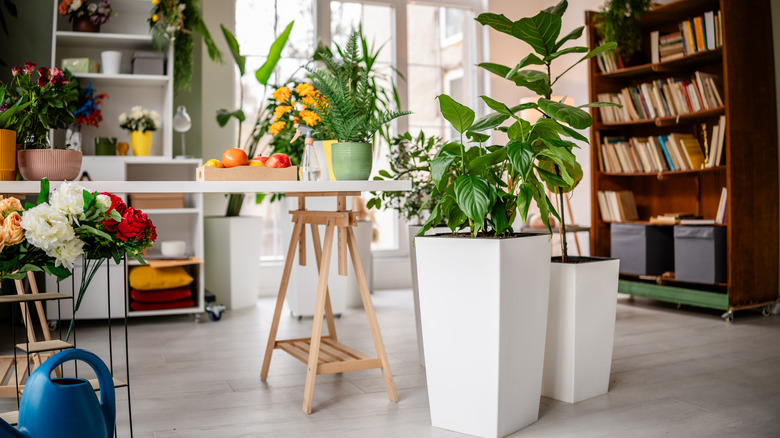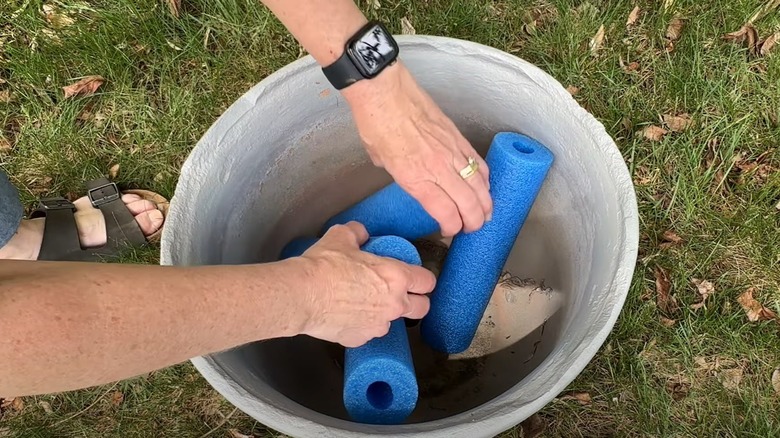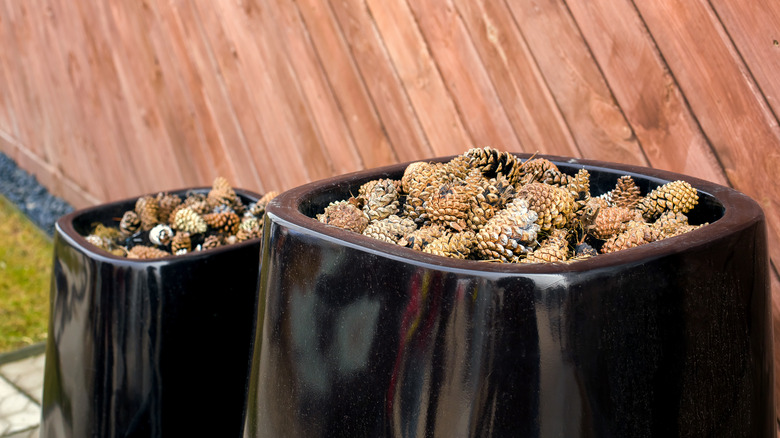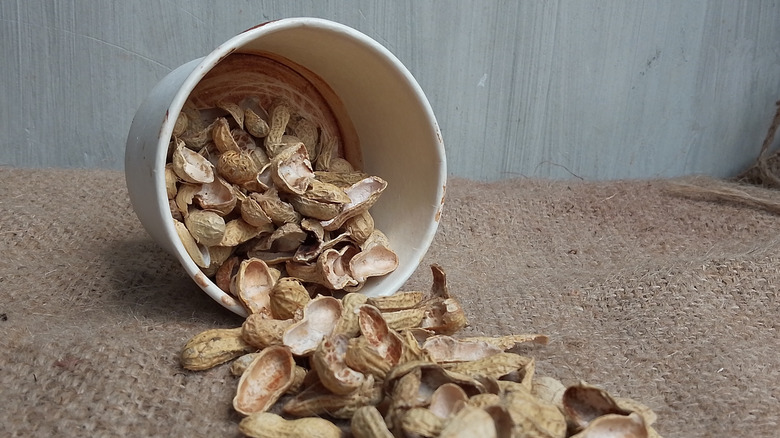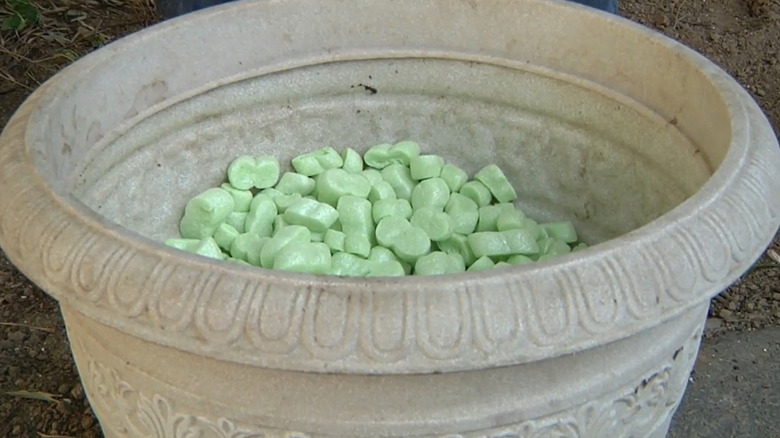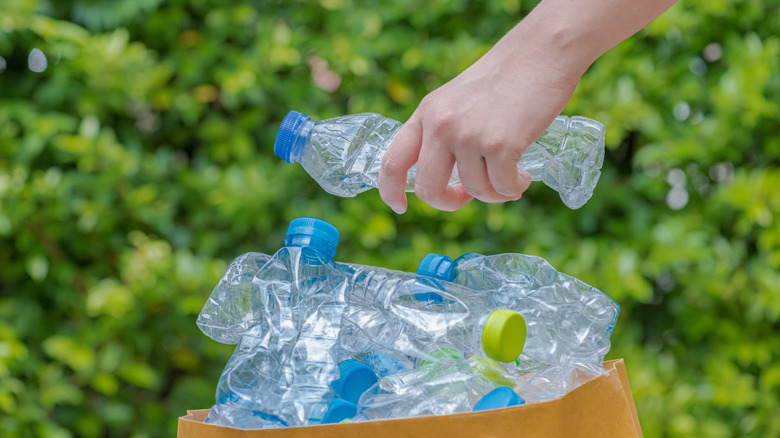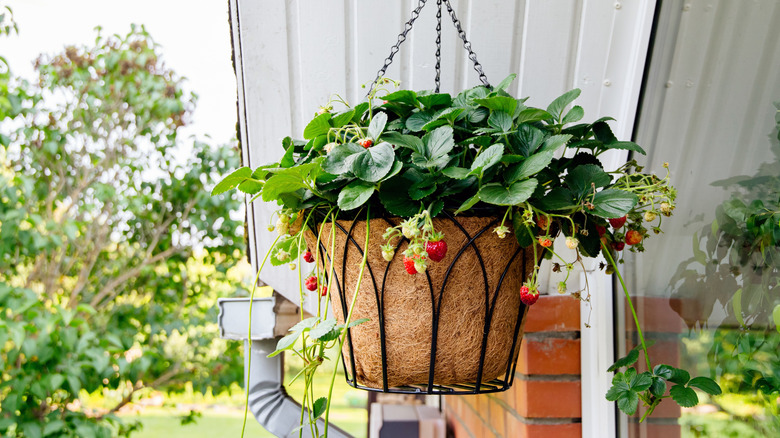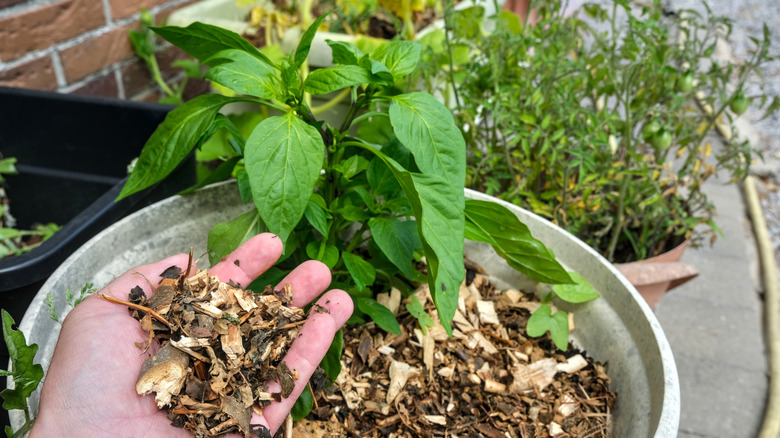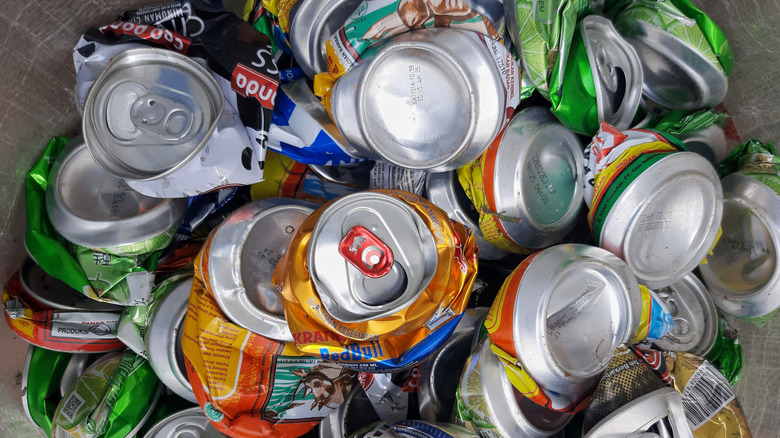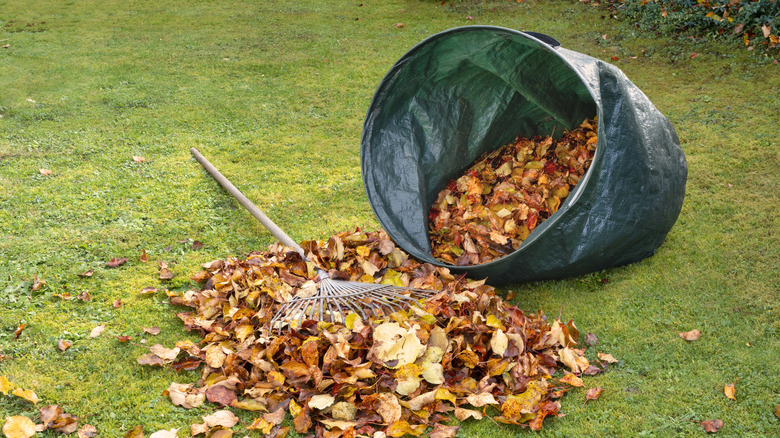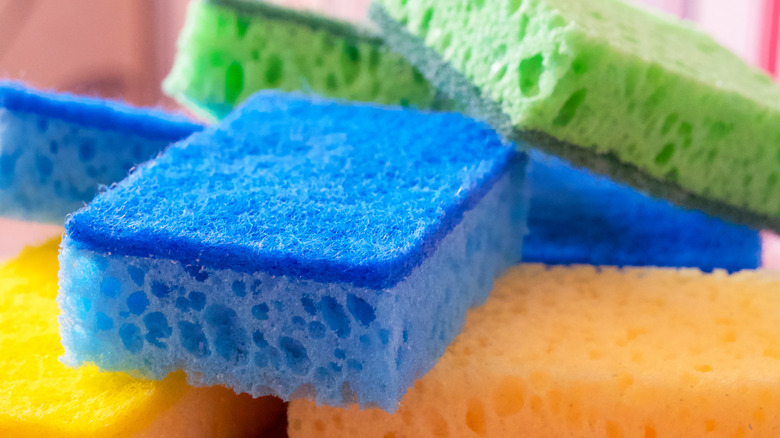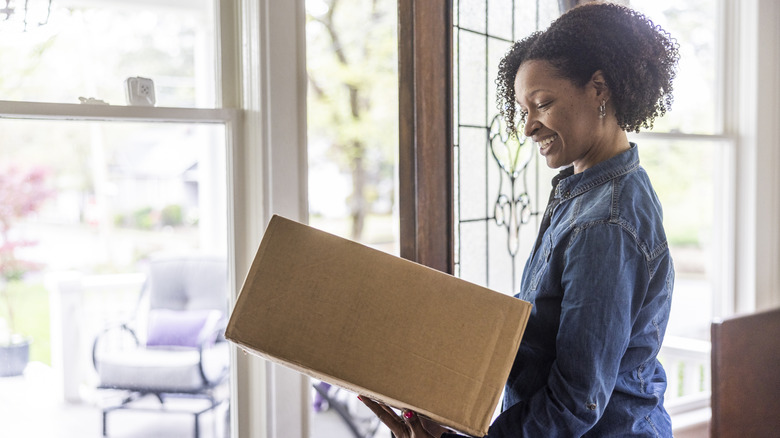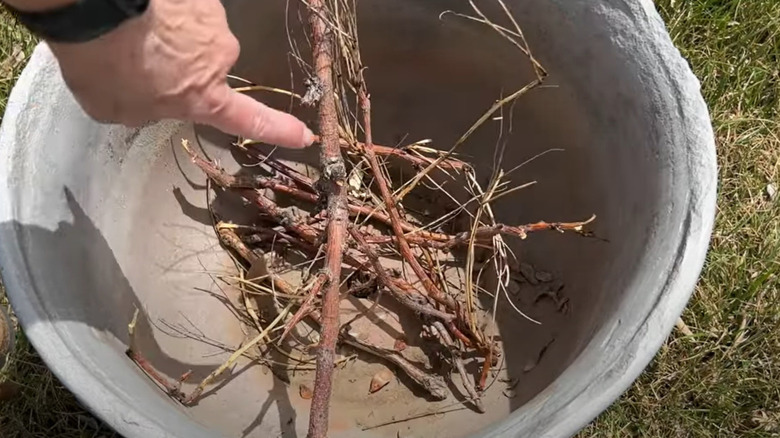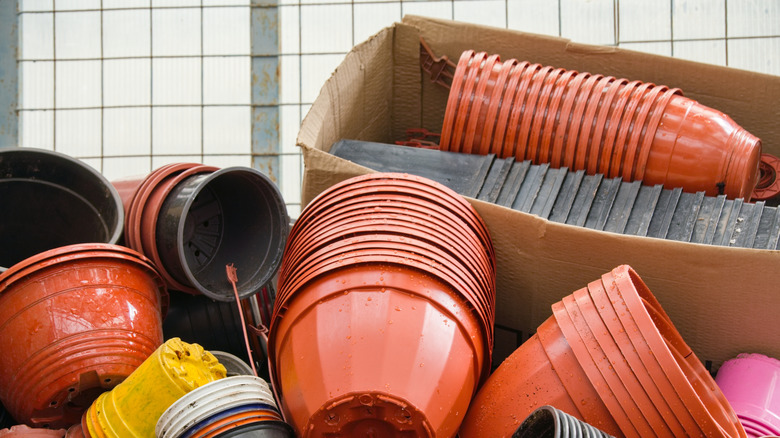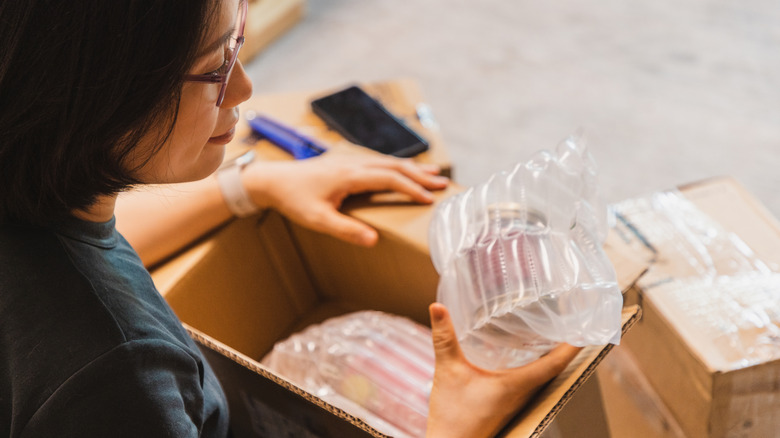15 Ways You Can Fill The Empty Space In Large Planters For Easier-To-Carry Houseplants
We all love the look of oversized planters in our homes, but buying enough soil to fill them can feel like breaking the bank, a costly mistake to avoid when filling large garden planters. An oversized planter filled with soil also makes planters much harder to move around, putting you at risk for hurting your back or damaging your floor when moving it. Thankfully, there are many cheap hacks you can employ to help fill planters to save both your back and your bank account.
Anything from plastic bottles to coco coir can help to take up space in the bottom of the planter. Some added fillers won't just keep the planters light, they can be mold resistant like pine cones – which have the bonus of making healthier houseplants. Other fillers, like sponges, can help moderate moisture and prevent your soil from drying out, even if you sometimes forget to water.
You can even upcycle old trash that isn't normally recyclable. Styrofoam packing peanuts or old nursery planter liners can plug the gap in the bottom of a planter and help keep it easier to move around your living room. Newspaper or old cardboard works great, too. Keep on reading for some of the best items to use in your home or garden planters that are cheaper and lighter than soil.
Add pool noodle pieces to the bottom of your planter
While potting soil can cost about $20 for a 50-quart bag, you can save that cash and spend just a $1.50 for a pool noodle at your local Dollar Tree and use it to fill the bottom of planters. Just grab a noodle or two, slice it into pieces, and place them at the bottom of your planter. It's a cheaper and lighter filler for most any oversized planter in your house. If you place them holes up, then pool noodle pieces also might help improve drainage in your planter.
Pine cones help keep planters mold resistant
There is a clever reason you should be using pine cones when filling planters. They can make your planter lighter, save you money, and help keep your plants healthy. Pine cones have several benefits, including being mold resistant, which can help avoid plant disease. If you've got a pine tree in your backyard, this planter filler is free. Just gather up a few and place them at the bottom half of your planter. Fill the top half with potting soil.
Used peanut shells are a natural filler
If peanuts are your go-to snack, try saving those empty peanut shells to help fill your planters and make them lighter for you to move and healthier for your plants. Peanut shells improve soil by breaking up compact areas and increasing aeration by creating pockets of air in the soil. This allows more space for plant roots to grow. Peanut shells also help keep soil moist, so it doesn't dry out as easily. They also might regulate the temperature in the pot for happier plants.
Styrofoam packing peanuts can be repurposed
If you don't have natural peanuts, but you have plenty of artificial Styrofoam ones, they can work in your planter, too. Keep in mind that some kinds of Styrofoam are built to degrade over time, which could mean you might find yourself with sunken plants in your pot. To determine whether the Styrofoam you have should be used in a planter, soak it in water for a few days to test whether it'll break down in moist conditions before you put it in your flower pot.
Reuse empty plastic water bottles
Plastic bottles are another easy way to recycle trash into a valuable lightweight filler for your oversized planters. Keep the caps on to make sure water or soil doesn't seep into your bottles. Tightly screw on caps to help the bottles keep their shape and not buckle as well. If you have a ton of plastic bottles lying around, you can also reuse one as a planter by cutting off the top or cutting a segment out of the middle.
Try coco coir liner to help regulate water intake
Coco coir, made from the fibrous part of a coconut, makes for a great planter filler because it can absorb water and then dole it out to the plant in regular doses. This prevents overwatering and underwatering. They're especially good for hanging baskets, which are prone to drying out. Coco coir will retain water and help keep soil in hanging baskets moist. Coco coir happens to be pH neutral, too, and fungal resistant as an added bonus. It also comes with a helping of potassium and phosphorus for hungry plants.
Mulch helps improve drainage
We all know mulch can be great on top of flower beds to help inhibit weed growth and conserve water by shading the soil from drying sunlight, but did you know you can also use mulch to help fill your planter — on the bottom or the top? As mulch breaks down, it can enrich the soil, and help plants grow. It can also provide a nice layer on top of your planter and help fill in any gaps you might have between a pot liner and the planter itself.
Aluminum cans in planters offer a different way to recycle
Aluminum cans can be another thrifty way to fill your indoor planters. You can toss aluminum cans in your recycling, or you can instantly repurpose them at the bottom of your planter. Cans, whether crushed or whole, also allow pockets and crevices for drainage, making it harder to overwater your potted plants. Just be sure to put the cans on their side or top down so they don't fill up with water as you water your plants.
Leaves can give plants a nutrient boost
In the fall, you don't have to throw your leaves away. Instead, bring them inside and fill your planter with them. Leaves are free and plentiful, so save money on soil and tuck this nutrient-rich material teaming with good microbes at the bottom of your oversized planters. You can also add leaves to the compost pile, or use them to insulate tender perennials for the winter. Remember, not all leaves are created equal. Avoid walnut and camphor laurel leaves as they can inhibit plant growth.
Sponges can help keep plants for drying out
When it comes to planter fillers, sponges can be your best friend. They'll keep your planters both lightweight and moist. Since sponges will absorb extra water, this will help you keep potted plants from drying out with a budget-friendly solution you can DIY. You can put in sponges whole or cut them into cubes, whichever you prefer. If you sometimes forget to water plants or you're headed on vacation, this hack can make sure the soil doesn't get too dry between waterings.
Cardboard boxes also work as cheap filler
If you've got a recycling bin overflowing with cardboard boxes, just take a few, cut them up and set them at the bottom of your planter. Cardboard, like other organic fillers, can break down over time, but if you're using it for a temporary filler, say for seasonal annual flowers and not perennials, it might be just the right base layer in your pot. Because cardboard is biodegradable, you can also use it to fill raised flower beds, too, which can save a lot of money on extra soil.
Fetch some sticks and put them in your planter
Sticks also can be a cheap and easy filler. You can gather sticks from your yard or flowerbeds, and use them as a light-weight organic solution for your oversized planters. As sticks decompose, they'll offer some extra nutrients to the soil to feed your potted plants and help them thrive. They also naturally aerate the soil, creating spaces and breaking up compacted spots. This can create a better environment for stronger roots. Sticks can allow better drainage in the soil, too, making sure plants don't sit in water.
Fill a planter with other plastic pots
Sometimes it can feel like the garden shed becomes easily overrun with plastic pot sleeves. Every plant comes with one, it seems, but we rarely keep those plants in that plain container. Fear not, you can reuse those liners inside your decorative planter. Just turn one (or several) upside down, and you'll have a new base level for your plant, complete with handy drainage holes. Plant pots or liners can help regulate moisture in the soil as well.
Use old newspaper as an organic filler
Old newspapers also can be a fairly lightweight way to fill a planter. Newspapers, of course, will break down over time, so know that you might have to add soil or mulch to the top of your plants if they begin to sink. If you plan to repot this planter with annuals, then it won't really matter. Also, if you're worried about the toxicity of ink on the paper, don't fret. Newspaper inks are safer and less toxic than they used to be. Most of them are now made with plant dyes.
Put bubble wrap to work cushioning plants
Bubble wrap is meant to fill the empty spaces in your boxes, so it can do the same thing in the bottom of your planters. If you're looking for a lightweight filler, it might just be made for the role. Bubble wrap isn't likely to degrade that quickly, either, so it can fill up that space longer than organic, compostable fillers like newspaper. If you put bubble wrap in your landfill, it'll take anywhere from 10 to 1,000 years to degrade. So rest assured, it'll work for a long time in your planter.
